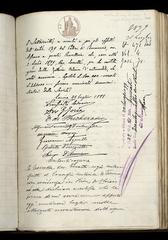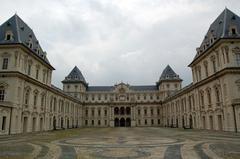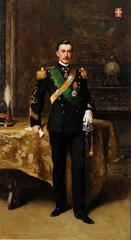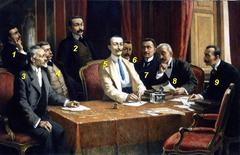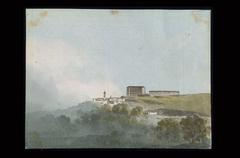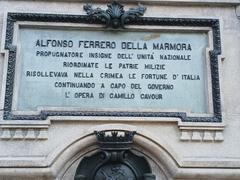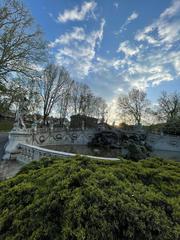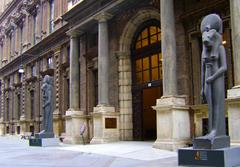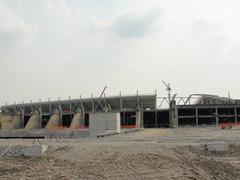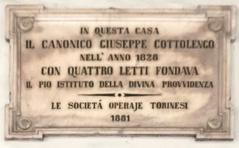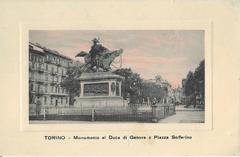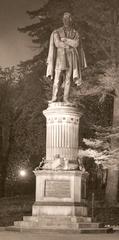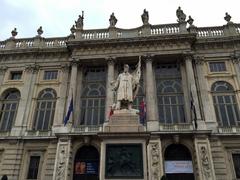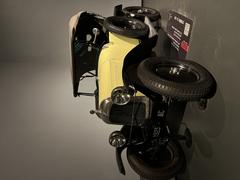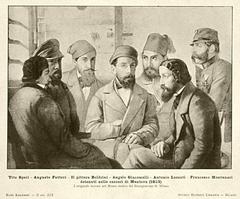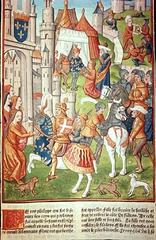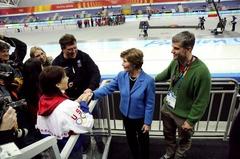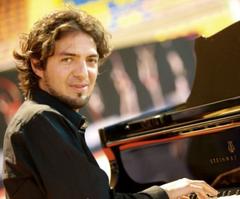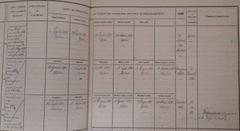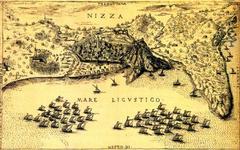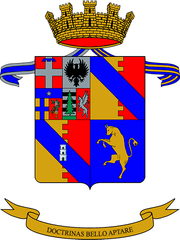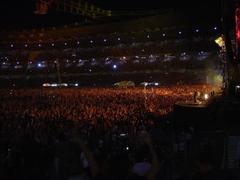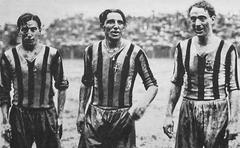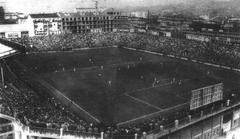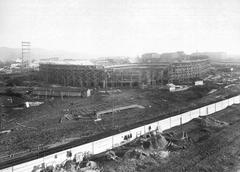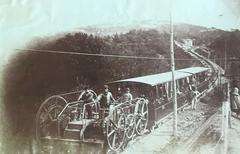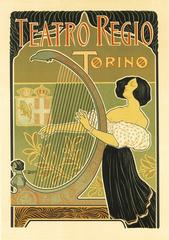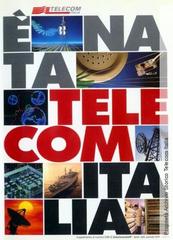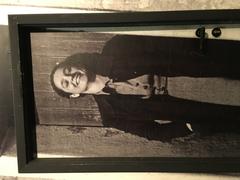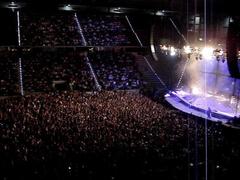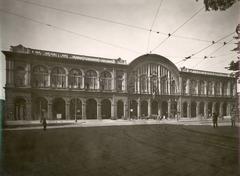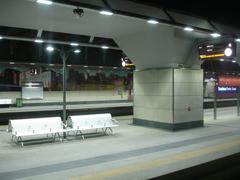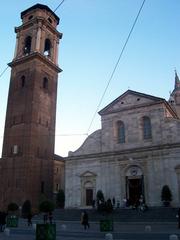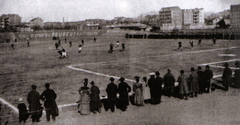
Basilica of Corpus Domini, Turin: Visiting Hours, Tickets, and Historical Significance
Date: 04/07/2025
Introduction
Nestled in the historic heart of Turin, Italy, the Basilica of Corpus Domini stands as a profound testament to faith, history, and artistic achievement. Renowned for its origins in the legendary Eucharistic Miracle of 1453, the basilica has shaped Turin’s religious identity and inspired centuries of devotion. Today, it is not only an active place of worship and pilgrimage but also a celebrated example of Baroque architecture, reflecting the intertwined influence of the House of Savoy’s political and religious patronage. This detailed guide offers insights into the basilica’s history, practical visitor information, and tips for making the most of your visit to this iconic Turin landmark.
(Official Turin Tourism Website; Wikipedia EN; SpottingHistory)
Table of Contents
- Origins and the 1453 Eucharistic Miracle
- Early Commemorations and Chapel Construction
- Baroque Transformation and Artistic Enhancements
- The Site of the Miracle: Pilgrimage and Devotion
- The Basilica in Turin’s Religious and Civic Life
- Architectural Highlights
- Visiting Hours, Tickets, and Accessibility
- Special Events and Religious Services
- Nearby Attractions and Travel Tips
- FAQ
- Conclusion and Planning Resources
- References
Origins and the 1453 Eucharistic Miracle
The foundation of the Basilica of Corpus Domini traces back to June 6, 1453. During conflict between the Duchy of Savoy and France, soldiers looted sacred vessels—including a consecrated Host—from Exilles. As the Host was being transported into Turin, the donkey carrying it stumbled at the site where the basilica now stands. Eyewitnesses reported that the Host miraculously rose into the air and radiated light, a phenomenon interpreted as a divine sign. This event deeply impacted the city and became a defining moment in Turin’s spiritual history, eventually leading to the construction of a church in commemoration.
(Wikipedia EN; Wikipedia IT; Miracoli Eucaristici)
Early Commemorations and Chapel Construction
In response to the miracle, the city initially honored the event by commissioning devotional paintings at the city gates. In 1509, a small chapel was built on the site, with construction directed by Archbishop Innocenzo Cybo and architect Matteo Sanmicheli. This early oratory became a significant focus for local devotion and served as the foundation for further expansion as pilgrimages increased in the 16th century.
(Wikipedia IT)
Baroque Transformation and Artistic Enhancements
As the original oratory became insufficient for the growing number of visitors, the decision was made in 1607 to construct a larger basilica. Renowned architect Ascanio Vitozzi, with façade contributions from Amedeo di Castellamonte, created a grand Baroque structure. The façade is characterized by six pilasters and four columns, crowned with statues of angels and saints sculpted by Bernardo Falconi in the late 17th century. The basilica’s interior saw significant enhancement in 1753 under King Charles Emmanuel III of Savoy, led by architect Benedetto Alfieri. Here, elegant stuccoes, gilded moldings, and frescoes were added, while the high altar—crafted by Francesco Lanfranchi in 1664—remains a highlight.
(Wikipedia EN; SpottingHistory; Wikipedia IT)
The Site of the Miracle: Pilgrimage and Devotion
A marble slab inside the basilica marks the exact location of the 1453 miracle. This spot continues to serve as a focal point for pilgrims, especially during the annual Feast of Corpus Christi. The basilica hosts processions, special Masses, and Eucharistic adoration, drawing thousands of devotees and reinforcing its spiritual centrality in Turin.
(The Catholic Travel Guide)
The Basilica in Turin’s Religious and Civic Life
Throughout its history, the Basilica of Corpus Domini has played a vital role in Turin’s religious and civic identity. It was the site of important ceremonies, such as the fourth centenary of the miracle celebrated by Pope Pius IX in 1853, and its designation as a minor basilica by Pope Pius XI in 1928. Even beyond the Catholic faithful, the basilica serves as a symbol of unity and resilience, especially during periods of crisis or celebration.
(Miracoli Eucaristici; Christianedirectory)
Architectural Highlights
Exterior
The basilica exemplifies Baroque ecclesiastical architecture. Its symmetrical façade, designed by Vitozzi and completed by Castellamonte, features robust columns and pilasters, topped with statues by Falconi. The design draws the eye upward, symbolizing spiritual aspiration and the grandeur of faith.
(Wikipedia; SpottingHistory)
Interior
Inside, the basilica follows a Latin cross plan with a spacious nave and high vaulted ceilings. Ornate stucco, gilded moldings, and frescoes—enhanced by Alfieri’s 18th-century restorations—create an atmosphere of reverence. The main altar and the marble slab marking the site of the miracle are focal points for both art enthusiasts and pilgrims.
(SpottingHistory)
Artistic Treasures
Key artistic features include expressive statues, dramatic stucco work, and frescoes depicting religious scenes, all contributing to the basilica’s reputation as a Baroque masterpiece.
(Wikipedia)
Visiting Hours, Tickets, and Accessibility
Visiting Hours
- Monday to Saturday: 8:00 AM – 12:00 PM, 3:30 PM – 7:00 PM
- Sundays & Religious Holidays: 8:00 AM – 1:00 PM, 4:00 PM – 7:00 PM
Hours may vary on feast days and during special events. Always check the official tourism website before planning your visit.
Mass Schedule
- Weekdays: 8:30 AM and 6:00 PM
- Sundays & Holy Days: 9:00 AM, 11:00 AM, and 6:00 PM
- Special celebrations, notably the Feast of Corpus Domini, may affect opening times.
Tickets and Entrance Fees
Entry is free of charge. Donations are welcome to support preservation and ongoing maintenance.
Accessibility
- Street-level entry, suitable for wheelchair users.
- Some interior areas may have uneven flooring; assistance is available upon request.
- No public restrooms inside, but nearby cafés offer facilities.
Special Events and Religious Services
The basilica hosts regular Masses and special liturgical events, especially during the Feast of Corpus Christi each June. These celebrations include processions and draw large numbers of pilgrims. Concerts and cultural events are also held periodically—check the Turin tourism calendar for details.
Nearby Attractions and Travel Tips
Nearby Sites:
- Turin Cathedral (Duomo di Torino): Home to the Shroud of Turin.
- Palazzo Madama: UNESCO World Heritage Site with art collections.
- Piazza Castello: Turin’s vibrant central square.
- Museo Egizio: One of the world’s premier Egyptian museums.
- Via Garibaldi: Lively pedestrian thoroughfare for shopping and dining.
Getting There:
- Located at Via Palazzo di Città, 20, 10122 Torino TO.
- Easily accessible by tram or bus (nearest stops: Piazza Castello, Via Milano).
- Paid parking available at nearby garages.
Tips:
- Early mornings or late afternoons are ideal for a quieter visit.
- Dress modestly (shoulders and knees covered).
- Photography is permitted without flash or tripod—observe signs and be respectful during services.
FAQ
Q: What are the basilica’s opening hours?
A: Monday–Saturday 8:00 AM–12:00 PM and 3:30 PM–7:00 PM; Sundays 8:00 AM–1:00 PM and 4:00 PM–7:00 PM.
Q: Is there an entrance fee?
A: No, entry is free; donations are appreciated.
Q: Are guided tours available?
A: Yes, through local tourism offices or independent operators. Advance booking is advised for groups.
Q: Is the basilica wheelchair accessible?
A: Yes, with street-level entrance and assistance available.
Q: Can I take photographs inside?
A: Yes, but without flash or tripods, and not during services.
Q: Are there nearby attractions to visit?
A: Yes—Turin Cathedral, Palazzo Madama, Piazza Castello, and others are within walking distance.
Conclusion and Planning Resources
The Basilica of Corpus Domini is a remarkable intersection of faith, art, and history in the heart of Turin. From its miraculous origins to its Baroque grandeur and ongoing role as a center for worship and community, it offers a profound experience for every visitor. With free admission, accessible facilities, and proximity to other major attractions, it is an essential stop for anyone exploring Turin’s cultural heritage.
For up-to-date information, guided tours, and event listings, consult the Official Turin Tourism Website or download the Audiala app. Enhance your visit by exploring nearby sites and participating in special religious or cultural events.
References
- Official Turin Tourism Website
- Basilica of Corpus Domini - Turin Cultural Heritage
- Wikipedia EN
- Wikipedia IT
- SpottingHistory
- Christianedirectory
- Miracoli Eucaristici
- The Catholic Travel Guide
- Angoli Torino
- Triphobo Basilica page



